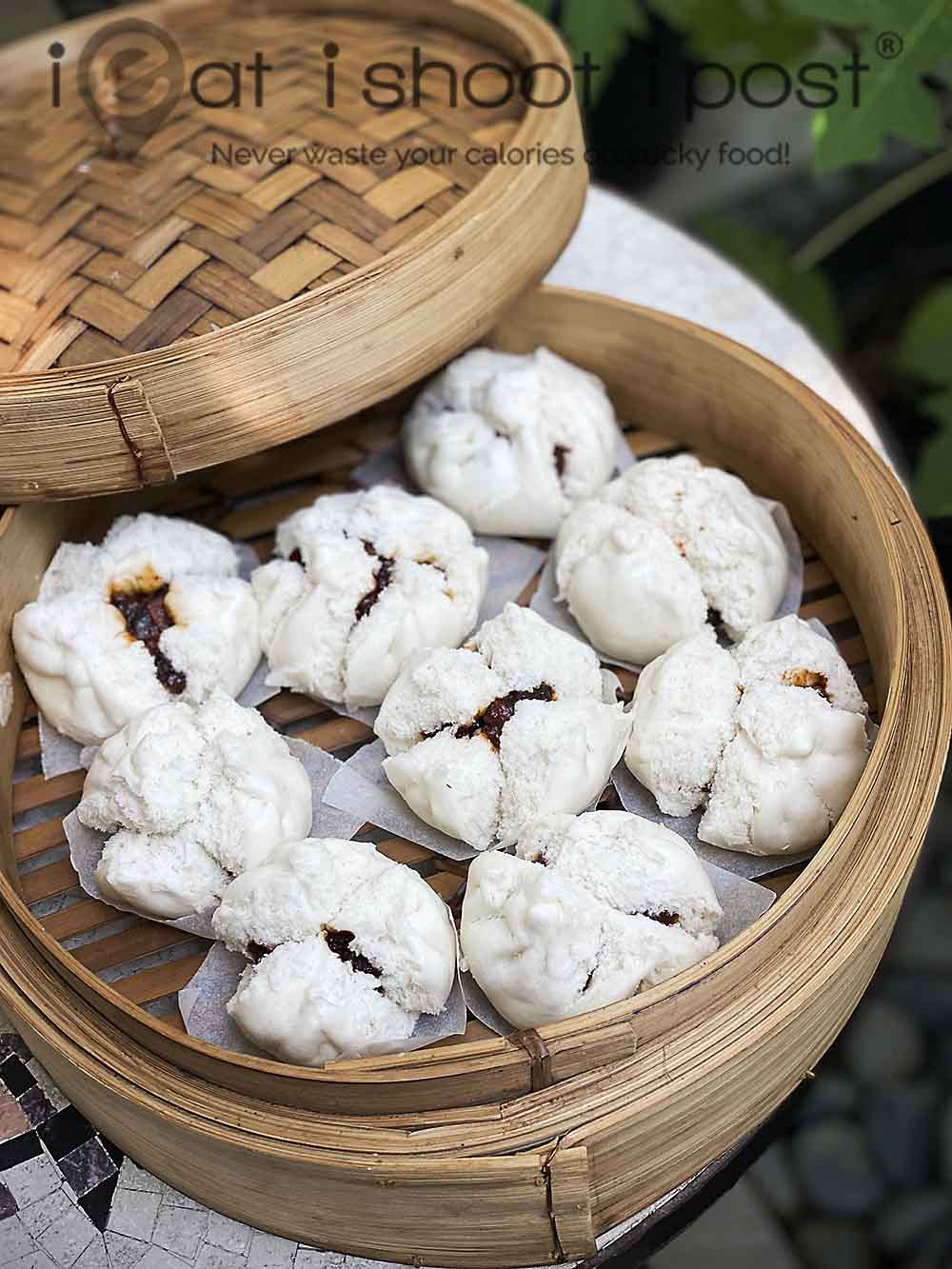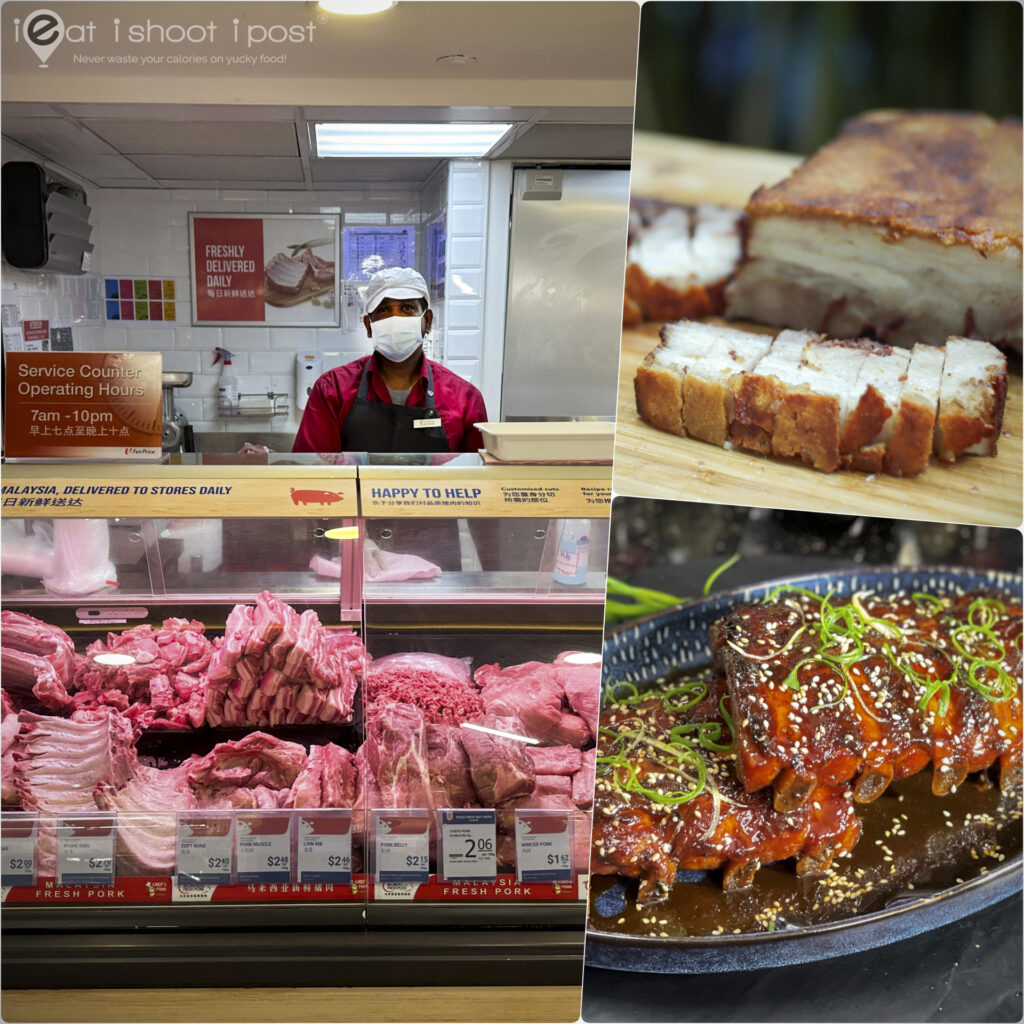
This is one of those really frustrating recipes which took me a long time to get right even though I was using a tried and tested recipe by veteran culinary instructor Irene Yip. A lot of it has to do with technique. In the end, Irene had to show me how to make it step by step so that I got to appreciate all the minor details in the recipe. I have included everything I have learnt here so that you don’t have to go through all the heart aches I have had to go through! So, make sure you read the detailed instructions at the bottom of the post!
This pau skin recipe is unique because uses a starter made from “wine biscuit” (酒饼) instead of the normal yeast. These are available from the local Medicinal Halls and is used to ferment red yeast rice wine. It is a slow acting yeast, so you will need to ferment it overnight! You can use instant yeast, but you won’t get the same texture.
I must say that after my multiple failures in getting this pau to “pong” (burst open), my level of respect for dim sum chefs and pau makers has been brought up a few notches! It really isn’t easy to get the perfect pau skin!
Now onto my Hong Kong Style Char Siu Bao Recipe – ieatishootipost
Ingredients (12 paus)
Starter (Ferment for 12-16hrs )
Wine Biscuit 10g (half)
Water 90ml
Hong Kong Flour 125g
Dough
Part A
Starter 200g
Castor sugar 60g
Water 2 tsp
Part B
Ammonia powder 1/4 tsp
Cream of Tartar 1/4 tsp
Double Action Baking Powder 6g
Hong Kong Flour 100g
Crisco 10g
Filling
Charsiu 150g (diced) (Here’s the recipe if you wish to make)
Sauce
Water 125ml
Light sauce 1 tsp
Dark sauce 1/2 tsp
Oyster sauce 1/2 Tbsp
Sugar 20g
Rose wine 1 tsp (optional)
Orange colouring pinch (optional)
Cornstarch 10g, Potato Starch 15g, Water 30ml (mix into slurry)
Chopped green onions
Method
1. Prepare starter dough 12-16 hrs before by dissolving the wine biscuit in water through a cloth bag. Though away residue and mix in the flour. Mix well and leave to ferment overnight.
2. Weigh out 200g of starter (should be all of it), add castor sugar and stir for 5 mins to dissolve sugar
3. Add Ammonia powder and mix well
4. Add cream of tartar and mix well
5. Sieve in 6g double action baking powder and mix well
6. Add 3/4 of flour and mix to form a wet dough
7. Add remainder flour and knead to form a smooth ball (5 mins)
8. Roll out the dough into a log and then fold the two ends into the middle and roll out again. Repeat this three times
9. Cut the dough into 30g pieces
10. Flatten the dough by rolling from the edge to the centre. The centre should be thicker than the sides
11. Add charsiu filling to the dough and pleat to form pau.
12. Place pau on a piece of baking paper and steam over high heat for 8mins.
Filling
1. Mix all the ingredients and bring to a simmer. Add cornstarch and potato starch slurry and mix to form a smooth gel. Add the diced charsiu and green onions and leave to cool. The filling should have a jelly/paste like consistency.

Detailed Step by Step instructions

These is the “wine biscuit” (酒饼). You can purchase these from the local medicinal halls. They give the pre-ferment a very unique fragrance that is quite different from the usual bread yeast. If you can’t get hold of them, just substitute with 1/4 tsp instand yeast. I haven’t actually tried it myself but theoretically, it should work.

You will need to put the yeast in a muslin bag, add the water and dissolve the yeast. There will be a bit of undissolved, wet paper mache like material in the bag.

After adding flour and kneading, you will get a dough like this.

After the fermentation period, the dough turns into a thick,sticky batter like this with lots of small bubbles. Make sure the bowl is covered with cling wrap. the top layer will be a dry membrane but will dissolve once you stir the batter.

The next few steps is crucial. When you add the castor sugar, make sure you stir is vigorously for 5 mins so that the sugar is fully dissolved and the air is incorporated into the batter. This was the step which I didn’t do properly which resulted in multiple failures.

Make sure you stir for a full 5 mins after which you add the ammonia powder and continue to stir to mix thoroughly. Make sure your ammonia powder is fresh. It should be kept in the fridge. If it turns a little moist, throw it away and buy a fresh bottle. This is followed by the cream of tartare. Take your time to stir so that it is mixed thoroughly.

Use a sieve when adding the double acting baking powder and make sure you buy “double acting” baking powder. Bake King and Crescent (Can buy small amt from Kwong Cheong Thye). No guarantee that other brands of baking powder will work. (Royal doesn’t)

Sieve in 3/4 of the Hong Kong Flour (yes, it has to be Hong Kong Flour) to the mix. Mixed until flour is incorporated.

Turn the dough onto your table top and knead in the rest of the flour.

After 5 mins, your dough should be nice and smooth like this. No need to over knead.

Roll the dough out into a log like this.

Fold the ends to the middle and roll it out again. Repeat two more times.

Cut the dough into 30g pieces. You don’t need to ball them. The cut surfaces will form top and bottom of the dough which will be the inside and outside of the pau respectively. The cut surface ensures that the pau will be smooth and shiny.

Using a roller, flatten the dough from outside towards the centre so that the centre is thicker than the rim.

For this pau, the rim should not be too thin. You need to have enough dough on the top in order for it to have enough dough to “pong”!

Fill the dough with char siu and start pleating.

You can check out Irene Yip kneading technique here.

Make sure you steam over a furious boil for 8 mins! I have tried using my steam oven and it doesn’t work!
This pau is very sensitive to small little mistakes! So make sure you follow my instructions closely! Good luck!!
Disclosure: Some links above are affiliate links, meaning, at no additional cost to you, we will earn a small commission if you click through and make a purchase.












You have crisco in your recipe. It appears on your ingredient list but does not appear in the steps. Seems like a brand that has oil, butter, shortening, etc. What is it supposed to be in your recipe?
Yes, crisco is vegetable shortening. It is added during the kneading stage. You can use lard to substitute.
Can I leave out cream of tartar?
Thanks
You may, but it does help to lower the pH which helps produce more gas in the dough.
I am wondering can I omit the amonia powder?
Sure, but it won’t puff up as much!
Hi! I’m wondering after filling with charsiu, does it need to proof before steaming?
No, you can steam immediately.
Hi , just steam char Siew pau using your recipe. It did burst like in your pictures but the pau is not soft enough. Should I leave it for some time before I steam it? Thanks you for the recipe
Yes you can leave it to rise a little longer.
The bun is similar to Filipino puto. I wonder if I can use a flour or rice based mother starter similar to a sourdough starter. That’s what we use to ferment the rice cakes here to make rice based puto.
I am sure it would work.
Tks I learn this recipe from hk chef 50 yrs ago Yang Siow Choon
N very good
This recipe I was also taught how to make mo hor ( colour buns for prayers)
Very beautiful buns
Yes, it is very nice isn’t it?
Hi,I’m so glad found your recipe. Is it Ammonium Bicarbonate ?
btw, do you need alkaline water to reduce the acidity due to long fermentation of sourdough ?
Thank you for your reply. I’m truly looking for it.
Yes Ammonium bicorbonate. WE did not use alkaline water in the recipe. All the ingredients are listed in the post.